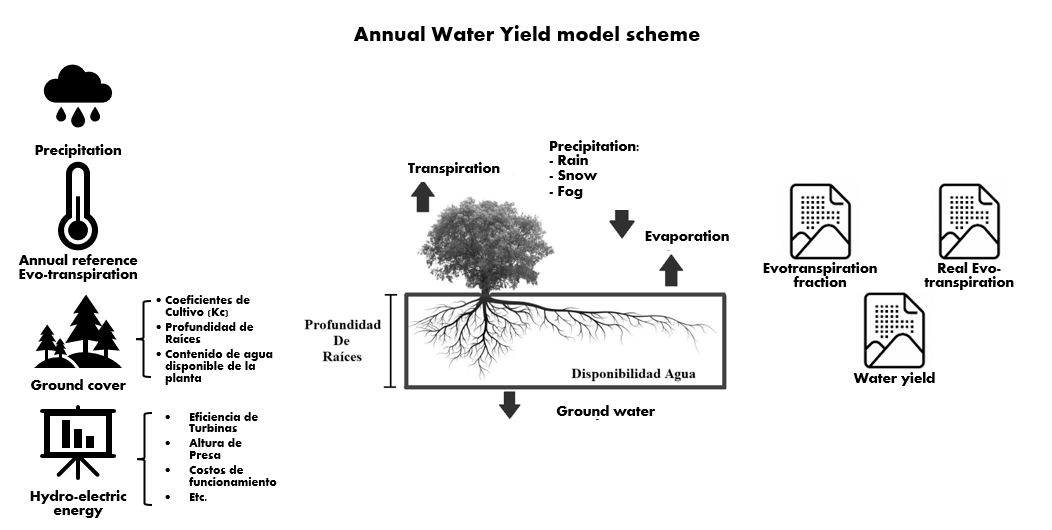InVEST - Annual Water Yield:
The service analyzes changes in the landscape that can affect the annual average water yield in order to help guide land use decisions that want to maintain watershed conditions and determine how to balance conservation actions and productive activities. The resulting maps can be used to inform restoration or management investments by downstream stakeholders, hoping to improve or maintain water performance for this important ecosystem service.
The model is run on a grid-type map and estimates the amount and value of water used for productive activities. It has three components, which are executed sequentially:
- Determine the amount of water leaving each pixel due to precipitation minus the fraction of the water that undergoes evapotranspiration. The model does not distinguish between the surface, the subsurface and the base flow, but assumes that all the water production of a pixel reaches the point of interest through one of these pathways.
- Sum and average the water yield at the sub-basin level. Pixel-scale calculations allows to represent the heterogeneity of key determinants of water performance, such as soil type, precipitation, vegetation type, etc. However, the theory that we are using as the basis for this set of models was developed in the sub-basin at the basin scale. It only relies on the interpretation of these models at the sub-basin scale, so all results are added and / or averaged at the sub-basin scale.
- Calculate the proportion of surface water that is available for different uses.
- Estimates the energy produced by the water that reaches the hydroelectric energy reservoir and the value of this energy during the useful life of the reservoir.
This model is spatially explicit, so it estimates the contributions of water at the pixel level by solving the conservation equation averaged at the annual level, as shown below:
Storage = Inputs − Outputs
This equation establishes that the changes in the storages are equal to the inputs to the system minus the outputs from it. In a sense, the model considers rain, snow and fog as inputs. However, it does not discriminate the specific participation that each one of this has throughout the hydrological cycle, It understands all of them as a global water input to the system. The model considers the outputs of the system due to the evaporation and transport processes, in an integrated way from the abstraction of evapotranspiration. The way in which the model quantifies the outputs is by making use of the Budyko curve proposed by Fu (1981) and Zhang et al. (2004). This relationship is a function of potential evapotranspiration, crop factors and the availability of water in the soil. The figure shows the outline of the information requirements that the model needs, the processes it considers and the results it generates.

Bibliography
InVEST documentation. Annual Water Yield. 2020. NATURAL CAPITAL PROJECT. | https://invest-userguide.readthedocs.io/en/latest/reservoirhydropowerproduction.html